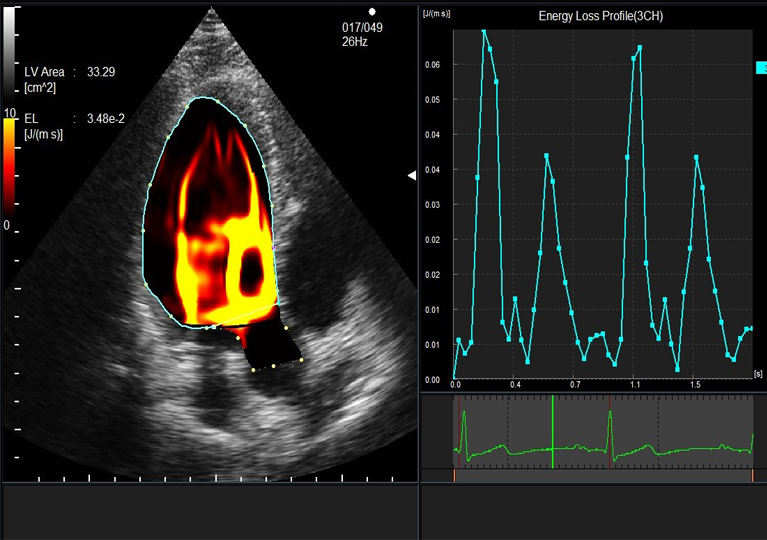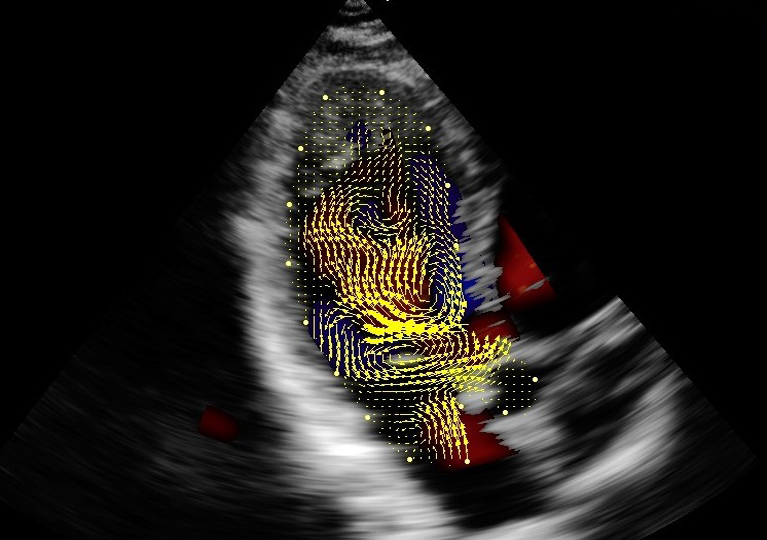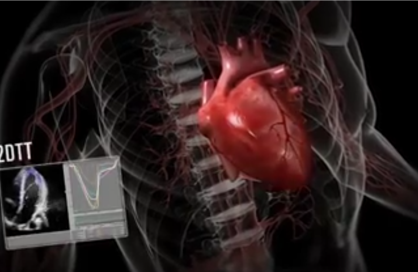Partnership with WVU advances the understanding of cardiac hemodynamics
It is both an exciting and challenging time to be in cardiovascular medicine. Cardiologists face the growth of an aging population and an increasing prevalence of valvular pathology. At the same time, population-based and personalized medicine is maturing and research discoveries and data informatics is yielding exciting new insights that are influencing an increased quality of life. To further cardiovascular discovery and improve patient outcomes, Hitachi and the West Virginia University (WVU) Heart and Vascular Institute recently announced a strategic partnership to increase the understanding of hemodynamics and to advance the evaluation of LV mechanical function. This will be accomplished by using advanced analysis technologies and applications that may provide more comprehensive assessments and improved therapies for cardiovascular disease.
Dr. Partho Sengupta, M.D.
Chief of Cardiology at the WVU Heart and Vascular Institute
Partho Sengupta, M.D., the Chief of Cardiology at the WVU Heart and Vascular Institute, serves as the project’s principal investigator for this multi-year strategic partnership. Dr. Sengupta is the associate editor of the Journal of American College of Cardiology: Cardiovascular Imaging. He is also the section editor for the Journal of American College of Cardiology, on the editorial board of eight cardiology journals, and has more than 200 publications and text book chapters. The winner of numerous awards, Dr. Sengupta recently spoke at TedMed 2016 on the topic of using holography to reshape cardiology.
In addition to improving the understanding of hemodynamics, the objective of the partnership is to provide evidence that cardiac multidimensional imaging with assessment of fluid mechanics has important roles in predicting non-invasive parameters in the study of percutaneous valve interventions. “In an era when percutaneous interventions have evolved to provide excellent therapeutic options for patients, cardiac flow mechanics has the distinct opportunity of going above and beyond traditional echocardiographic techniques in optimizing structure heart techniques,” said Dr. Sengupta.
WVU Medicine unites the doctors and researchers – both clinical and basic – of West Virginia University with the hospitals, clinics, and health professionals of the West Virginia University Health System. Together, they are driven by a passion to provide the most advanced healthcare possible to the people of West Virginia and beyond.
Hitachi Healthcare Americas Corporation, a wholly owned subsidiary of Hitachi, Ltd., offers a broad range of diagnostic imaging equipment including MRI, CT and Ultrasound that provide speed, comfort and quality for both physicians and patients alike. Hitachi Healthcare solutions play an important role in the diagnosis and treatment of disease while driving social innovation into healthcare. An additional focus for Hitachi is to provide clinical solutions for heart failure patients. Dr. Sengupta will be following patients with percutaneous value interventions for predicting improvements in NYHA functional classes.
Hitachi and WVU aim to gain clinical insights to benefit physicians and patients by going beyond traditional echocardiographic procedures in optimizing structural heart techniques. Cardiologists facing difficult clinical questions want a better understanding of morphological and hemodynamics distinctions for the determination of disease progression to improve diagnostic accuracy and assess risk stratification for their patients. Advances in phenotyping and risk stratification can yield vital data for guiding therapeutic decision-making and post-procedure monitoring.
Dr. Sengupta will be using Hitachi’s unique Vector Flow Mapping (VFM) technology and the new Lisendo 880 for this study. The Lisendo 880 is Hitachi’s most advanced 2D and 3D diagnostic ultrasound solution for cardiologists. VFM technology evaluates flow dynamics in the heart and vessels in a whole new way. In evaluating pre and post-surgical ventricular and transvalvular blood flow, VFM may help access complicated hemodynamics and determine surgical strategies. VFM is able to quantify the formation of vortices, quantify dissipative energy loss caused by turbulence, as well as better quantify gradients and regurgitation associated with heart valves and vascular structures to further clinical understanding.
The Lisendo 880, along with Hitachi’s VFM technology, was developed around the most important needs for cardiovascular diagnosis. “By creating a clinical partnership with the West Virginia University Heart and Vascular Institute and Dr. Sengupta, Hitachi Healthcare is taking an important step in finding advancements in clinical care for our cardiovascular patients,” said John Waddell, Vice President, General Manager Ultrasound of Hitachi Healthcare Americas.
Decisions pertaining to the timing and choice of valve surgery in patients with chronic lesions are complex. Ideally, intervention should be performed before the development of irreversible myocardial dysfunction, but not so early in the course of disease that the patient is unnecessarily exposed to the attendant risks. Advanced technology such as VFM can help cardiologists answer pressing questions and move cardiology above and beyond traditional echocardiographic techniques in optimizing structural heart techniques. By answering some of these clinical questions and advancing the science, cardiologists have the potential to improve and individualize patient care.
The collaboration between Hitachi and WVU highlights how Hitachi and its partners are focusing to co-create solutions that are benefiting society in the U.S. This partnership reflects the global commitment of Hitachi Social Innovation Business which is to improve the quality of life for society by identifying and addressing issues present in our everyday lives.
For more information about WVU Medicine, visit wvumedicine.org


For more information on how Vector Flow Mapping (VFM) evaluates flow dynamics in the heart and vessels in a new way, view the overview video.
For more information on the advanced features of the Hitachi LISENDO 880 for Cardiovascular, visit the website.

 Hitachi Healthcare - Vector Flow Mapping (VFM)
Hitachi Healthcare - Vector Flow Mapping (VFM)
Watch Video